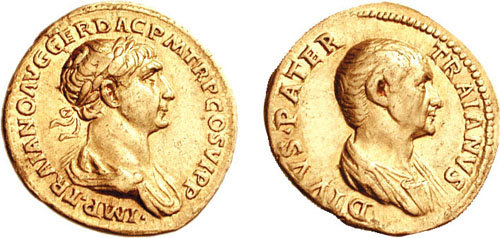|
Castra Of Călugăreni
The Castra of CălugăreniPánczél, Szilamér Péter. “The Roman Fort from Călugăreni (Mureș County, Romania).” LIMES XXII. Proceedings of the 22nd International Congress of Roman Frontier Studies Ruse, Bulgaria, 2015. was a castra, fort in the Roman province of Roman Dacia, Dacia located on the north-western periphery of the modern village of Călugăreni, Mureş, Călugăreni, Romania. The fort was built in the 2nd century AD and abandoned in the 3rd century. Archaeological research also proved the existence of a nearby ''canabae''. Location The fort is situated on the southern bank of the river Niraj at an altitude of around 445 m above sea level. In Roman times it was located in the province Dacia Superior on the eastern limes road between the Castra of Brâncovenești, forts of Brâncovenești in the north and castra of Sărățeni, Sărățeni in the southeast. Using a chain of watchtowers and exploiting the natural barriers of the mountains near Gurghiu ... [...More Info...] [...Related Items...] OR: [Wikipedia] [Google] [Baidu] |
Legio XIII Gemina
, in English the 13th "Twin" Legion was a legion of the Imperial Roman army. It was one of Julius Caesar's key units in Gaul and in the civil war, and was the legion with which he crossed the Rubicon in January, perhaps on 10 January, in 49 BC. The legion appears to have still been in existence in the 5th century AD. Its symbol was the lion. History Under the late Republic Legio XIII was levied by Julius Caesar in 57 BC, before marching against the Belgae, in one of his early interventions in intra-Gallic conflicts. During the Gallic Wars (58–51 BC), Legio XIII was present at the Battle against the Nervians, the Siege of Gergovia, and while not specifically mentioned in the sources, it is reasonable to assume that Legio XIII was also present for the Battle of Alesia. After the end of the Gallic wars, the Roman Senate refused Caesar his second consulship, ordered him to give up his commands, and demanded he return to Rome to face prosecution. Forced to choose either ... [...More Info...] [...Related Items...] OR: [Wikipedia] [Google] [Baidu] |
Canabae
A (plural ) was the Latin term for a hut or hovel and was later (from the time of Hadrian) used typically to mean a town that emerged as a civilian settlement () in the vicinity of a Roman legionary fortress (). A settlement that grew up outside a smaller Roman fort was called a (village, plural ). were also often divided into . Permanent forts attracted military dependants and civilian contractors who serviced the base and needed housing; traders, artisans, sellers of food and drink, prostitutes, and also unofficial wives of soldiers and their children and hence most forts had or . Many of these communities became towns through synoecism with other communities, some in use today. Some Canabae of Legionary Fortresses: * Canabae of Deva Victrix, later Chester, England * Canabae of Isca Silurium, later Caerleon, Wales * Canabae of Novae, Bulgaria * Canabae of Vindobona, later Vienna * Canabae of Argentoratum, later Strasbourg * Canabae of Nijmegen, Netherlands * Canabae ... [...More Info...] [...Related Items...] OR: [Wikipedia] [Google] [Baidu] |
István Paulovics
István () is a Hungarian language equivalent of the name Stephen or Stefan. It may refer to: People with the given name Nobles, palatines and judges royal * Stephen I of Hungary (c. 975–1038), last grand prince of the Hungarians and first king of Hungary * Stephen Rozgonyi (died after 1440), ''ispán'' (Count) of Temes County * Stephen III Báthory (died 1444), Palatine of Hungary * Stephen V Báthory (1430–1493), Hungarian commander, judge royal and Voivode of Transylvania * Stephen VIII Báthory (1477–1534), Voivode of Transylvania * Stephen VII Báthory (1480–1530), Count of Temesvár and Palatine of Hungary * Stephen Báthory (1533–1586), Voivode of Transylvania, Prince of Transylvania, King of Poland and Grand Duke of Lithuania * Stephen Báthory (1555–1605), judge royal of the Kingdom of Hungary * Stephen Bocskai (1557–1606), Prince of Transylvania and Hungary * Stephen Bethlen (1582–1648), Prince of Transylvania Politicians * István Balogh (polit ... [...More Info...] [...Related Items...] OR: [Wikipedia] [Google] [Baidu] |
Trajan Road
Trajan ( ; born Marcus Ulpius Traianus, 18 September 53) was a Roman emperor from AD 98 to 117, remembered as the second of the Five Good Emperors of the Nerva–Antonine dynasty. He was a philanthropic ruler and a successful soldier-emperor who presided over one of the greatest military expansions in Roman history, during which, by the time of his death, the Roman Empire reached its maximum territorial extent. He was given the title of ('the best') by the Roman Senate. Trajan was born in the of Italica in the present-day Andalusian province of province of Seville, Seville in southern Spain, an Italic peoples, Italic settlement in Hispania Baetica; his came from the town of Todi, Tuder in the Regio VI Umbria, Umbria region of central Italy. His namesake father, Marcus Ulpius Traianus (father of Trajan), Marcus Ulpius Traianus, was a general and distinguished senator. Trajan rose to prominence during the reign of Domitian; in AD 89, serving as a in , he supported t ... [...More Info...] [...Related Items...] OR: [Wikipedia] [Google] [Baidu] |

